
views
Using the Original Paint Can
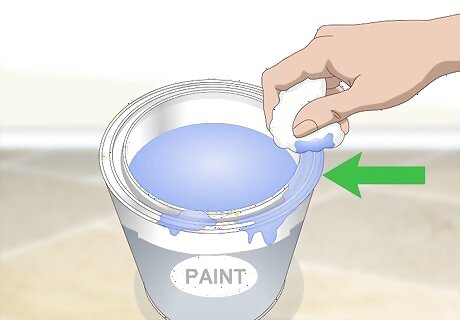
Clean the rim of the paint can if necessary. Dried paint or debris on the rim could make it difficult or impossible to get a tight seal when you put the lid back on the paint can. Use a wet rag to wipe up fresh paint and use a straightened wire hanger to remove crusted globs of paint if necessary. The best method of ensuring your paint can’s rim is clean is to avoid getting paint on it in the first place. You can do this by wrapping a rubber band around the top of the paint can and using that to wipe excess paint from your brush as you’re using it. Keep the rim clean by wiping it with a rag if any paint gets in there while you're painting.
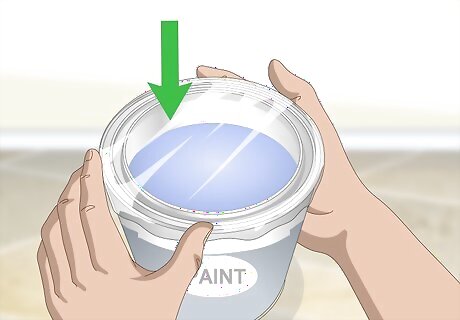
Place a layer of plastic wrap over the opening of the can. Before placing the lid back on the paint can, apply a layer of plastic or saran wrap over the top of the can and stretch it slightly. This will act as an airtight seal that will prevent air from entering the can and keep your paint fresh. You can also take a plastic bag and cut out a circle slightly larger than the opening itself and use that to create your gasket. Be careful not to stretch your plastic wrap so far that it tears; if it won’t prevent air from entering the can, it won’t keep your paint fresh.
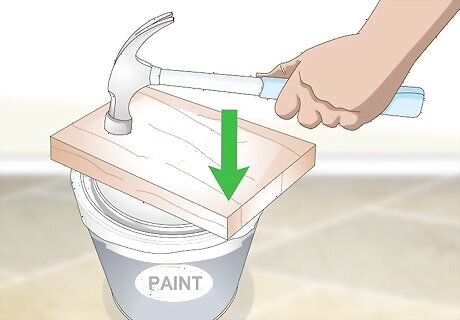
Use a hammer and block of wood to close the lid over the can. When placing the lid back on the paint can, don’t hammer it directly, as this may result in distortions in shape that may disrupt the air seal. Instead, place a block of wood on the lid and hammer the block to set the lid firmly into place. For best results, use a block of wood that is roughly the same size as the lid and which will evenly distribute the force of the hammer across the lid to avoid distorting it. You can also use a rubber mallet or the back of a screwdriver to tap gently around the edges of the lid to close it over the can.
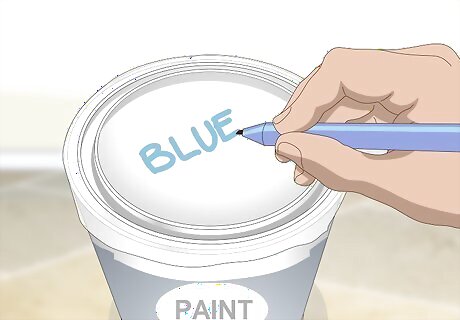
Note on the can what color the paint is and where it was used. Once your paint can is sealed and stored, it may be difficult to figure out at a first glance what leftover paint is in the can. To avoid confusion later, use a marker to note what color the paint is, when you opened it, and where you used it. For a quick visual identifier, consider placing a small droplet of paint on the lid of the can to instantly know what color the leftover paint is. Note on the can where you originally bought it from, if that information isn’t already on it; when you use the leftover paint, you may need to buy more.

Store the can in a dry location where temperatures are above freezing. Place the sealed can on wooden or plastic shelving in a dry room to prevent the can from becoming rusted. Make sure the location that you store it in is kept at a temperature that won’t cause the paint to freeze. If the paint freezes, it will separate and become permanently unusable. It’s very important to keep the paint can dry at all times. Not only will a rusted can ruin the surface it is placed on, but it will also ruin the paint it is holding. If the paint can gets wet, it may also cause your labels to fall off, leaving you unable to identify the leftover paint you stored in it!
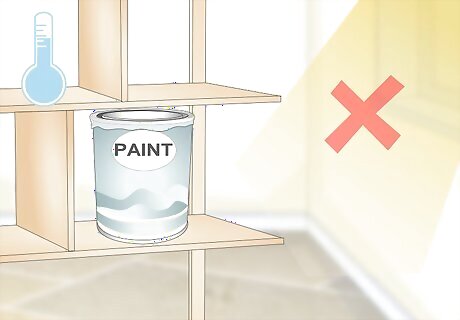
Make sure to keep the paint cool and out of direct sunlight. While paint kept at a freezing temperature will become unusable, paint kept at too hot of a temperature will deteriorate and similarly become unusable. Store the paint far from heat sources, such as water boilers, radiators, heaters, or direct sunlight, to help preserve the paint in the long run.
Repackaging Leftover Paint
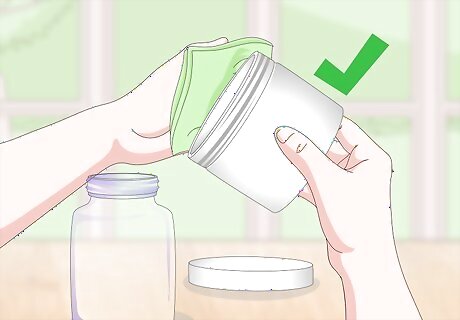
Clean out a glass or plastic container just big enough to hold the paint. Use a container that will hold your leftover paint without leaving too much airspace on the inside. This will not only prolong the life of your paint, but will also reduce the amount of storage space needed. Use a cloth to wipe away any dust or debris inside the container before proceeding. Examples of containers that might be good for storing leftover paint include glass mason jars, small plastic jars with sealable lids, or even plastic water bottles. If the container is very dirty, wash it first with soap and water to remove any dirt or substances that might pollute your paint.
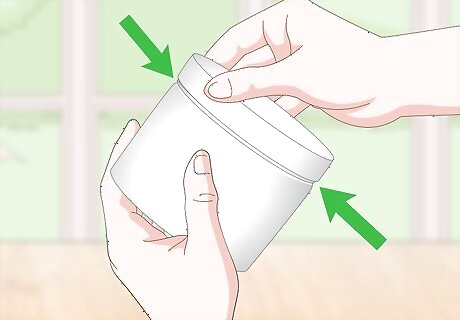
Make sure the container is airtight or can be made to be airtight. You’ll need to ensure your paint is not exposed to air in its new container to prevent it from going bad. Check to make sure the container you plan to use is either fitted with an airtight lid or can have a layer of plastic wrap placed over its opening to create a gasket. The ideal container for you to use would be a glass jar with an airtight lid that screws on.
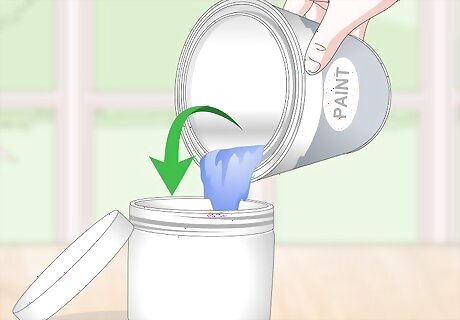
Transfer your leftover paint into the container. Once your container is clean, pour the leftover paint from the original can into the container, going very slowly to avoid spilling any. Consider using a funnel to better ensure that you won’t have any spills as you’re pouring the paint.
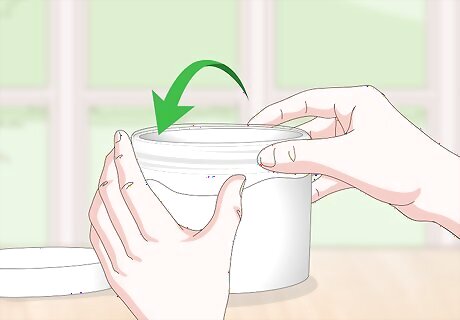
Use plastic wrap to create an airtight seal over the container. Before placing the lid back on the container, stretch out a piece of plastic wrap and place it over the container’s opening to create a seal that will help keep air out of the container and keep the paint fresh. If you don’t have plastic wrap, material from a plastic shopping bag can also be used; simply cut out a circle slightly larger than the opening itself and place it over the opening. Avoid tearing the plastic wrap, as this will mean it’s no longer airtight and thus won’t keep your leftover paint fresh.
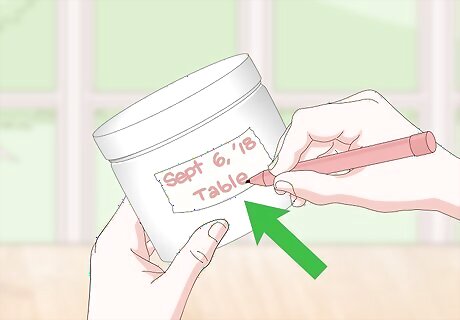
Note on the container when you opened the paint and where you used it. Use a marker and piece of masking tape to make the note after the container has been sealed. If your container is not transparent, note what color the paint is, as well. If possible, also note on the container where you originally bought the paint from. When you use the leftover paint, you may need to buy more.
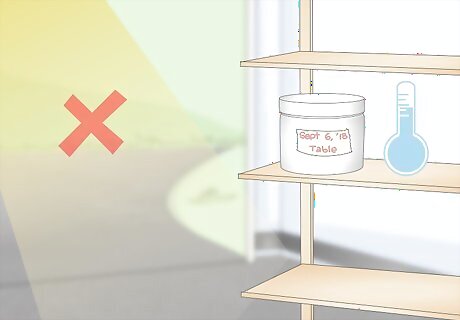
Store the container in a cool, dry location out of the sun. Make sure the location that you store the container in is kept at a temperature that won’t cause the paint to freeze. Keep the paint out of direct sunlight and away from other heat sources that may speed up the paint’s deterioration. It’s very important to keep temperatures in the room you store the paint in above freezing. If the paint freezes, it will separate and become permanently unusable.




















Comments
0 comment